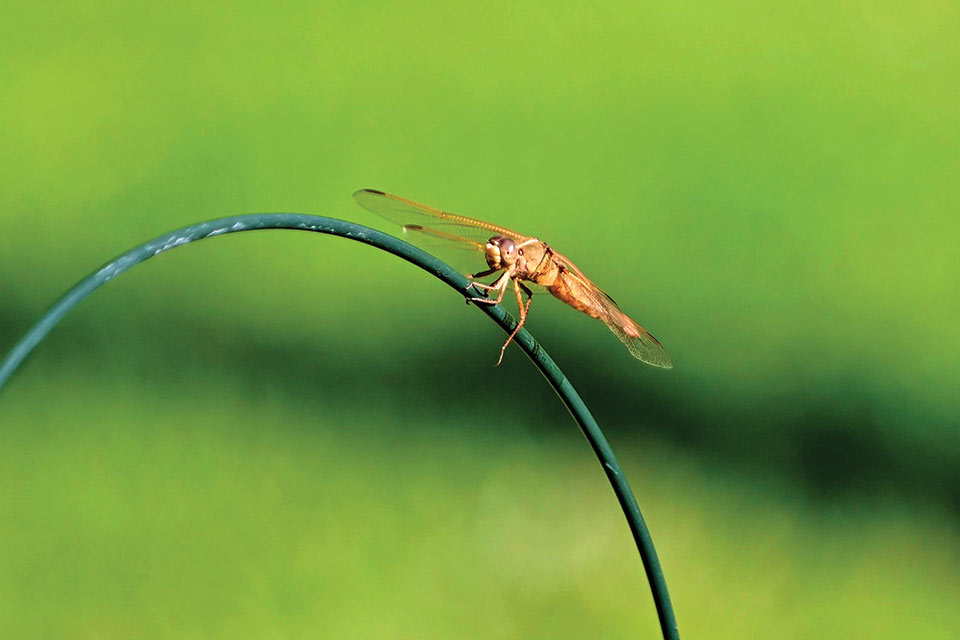How To Intercept Weapons, at Dragonfly Speed

Photo Credit: John Wagner
By David Silverberg

Frances Chance, GSAS MS’97, PhD’00 (Photo Credit: Vicky Yang)
If you’ve ever watched a dragonfly zig and zag over a pond in search of dinner, you know how fast these gauzy-winged insects can move. In less than half the time it takes a human eye to blink, a dragonfly calculates the coordinates of where its prey is headed and gets there in time to snatch it up.
Neuroscientist Frances Chance, GSAS MS’97, PhD’00, a principal member of the technical staff at Sandia National Laboratories in Albuquerque, New Mexico, is studying the dragonfly’s amazing interception skills at the neural circuit level. She and her colleagues are looking to develop biologically inspired algorithms and technologies. Ultimately, the goal is to build a computer chip that replicates the processes of a biological brain that could be used in national defense systems.
The human brain has 86 billion neurons to tease apart, yet the tiny dragonfly brain is composed of just 1 million neurons, making the research challenge more feasible. These smaller brains can be studied to understand the insect’s special ability. In the case of the dragonfly, that’s its interception skills, which enable it to capture 95% of the insects it tracks.
As Chance explained in a 2022 TED Talk that’s been viewed more than 1.3 million times, “With smaller brains, there’s more opportunity to look at how individual neurons are contributing to a behavior and [to] think about how that can be implemented in hardware that is supporting a particular algorithm.”
Sandia, a federally funded national security research and development center for the U.S. Department of Energy’s National Nuclear Security Administration, is interested in developing technological solutions for national security missions, including Chance’s idea of an interception algorithm as efficient as a dragonfly.
“The idea that a bug brain could be accelerated by modern-day computers to do this calculation very fast was something intriguing to me,” Chance says.
Applications of her dragonfly research might extend beyond weapon interception — to self-driving cars, for instance, which could potentially use her algorithms to avoid collisions.
To study dragonflies’ brains, the scientists showed the insects a video of moving targets while electrodes recorded the activity patterns of individual neurons, thereby identifying which neurons were responsible for interception.
Chance then developed a computer program that simulates a dragonfly and its prey moving at the same speed through three-dimensional space. As they move, her neural-network model “sees” the prey and calculates where to point to keep the image of the prey at the correct angle, then tells the dragonfly where to turn to pursue and capture the prey.
The next step will be creating a dragonfly circuit prototype, a type of computer hardware based on the dragonfly brain. “It will help us understand biological neural networks and how they can be applied to artificial systems,” Chance says.
Eventually, the Sandia researchers hope to build computer chips that can mimic the way individual neurons work together to produce activity patterns in the biological brain.